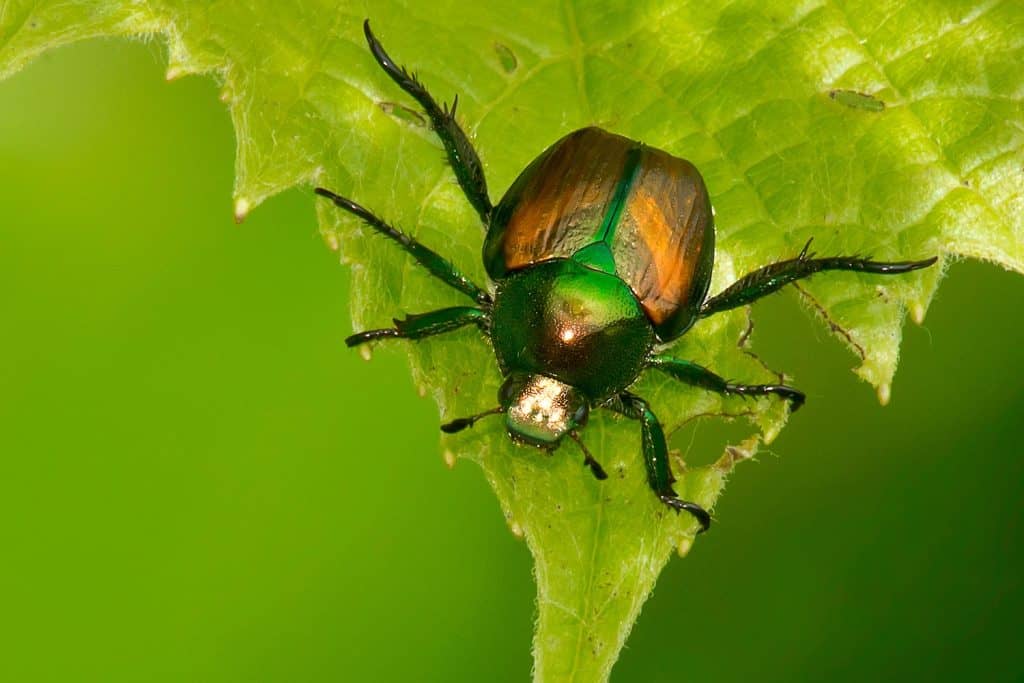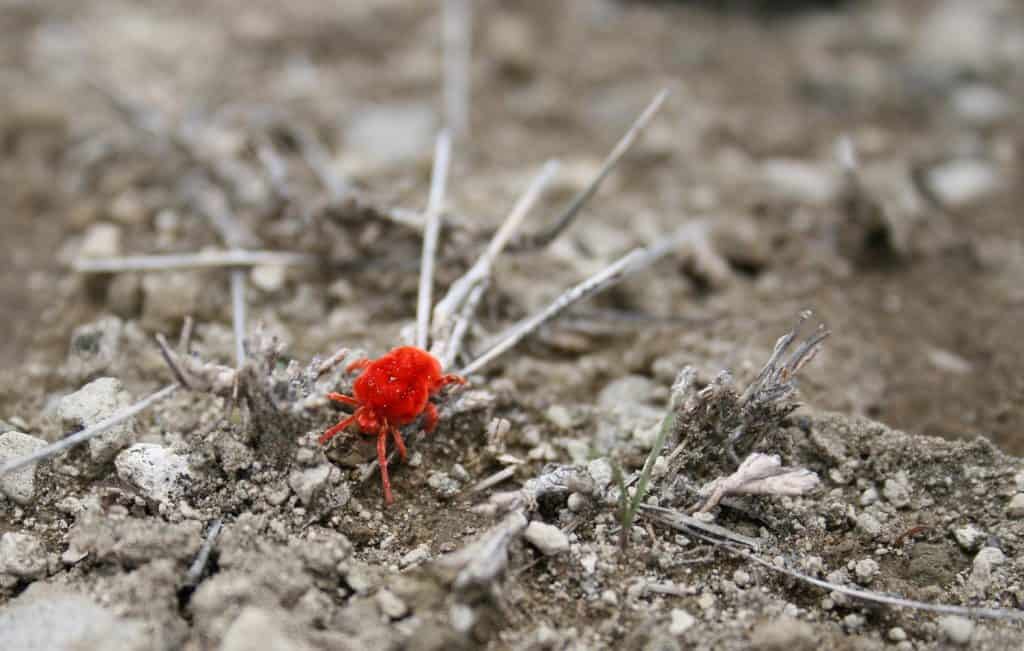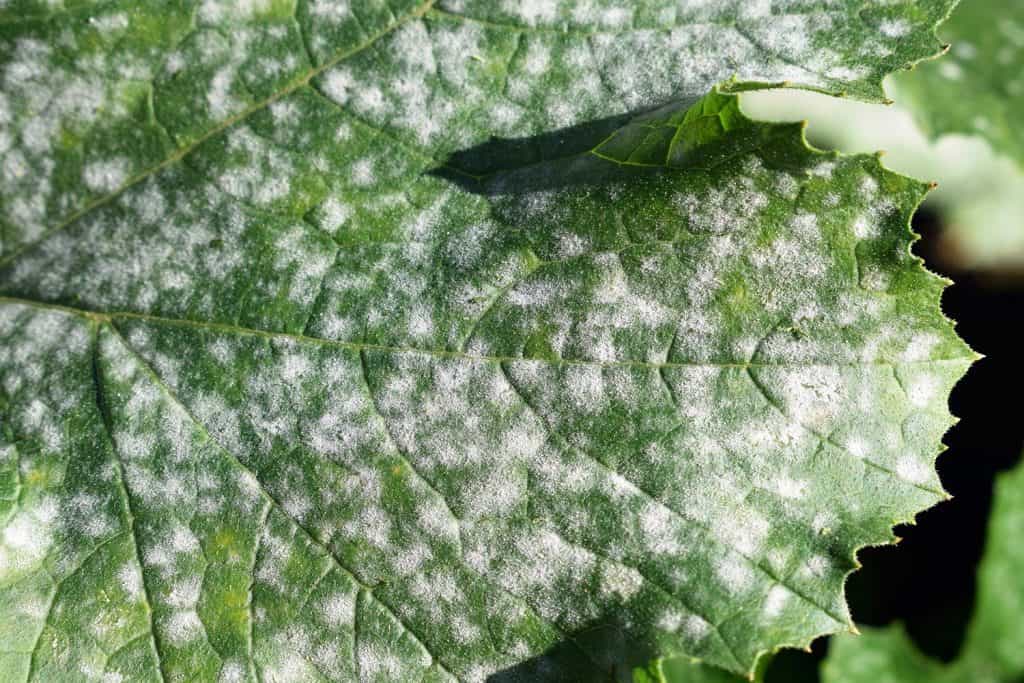Crepe myrtles are known for their long bloom which provides colorful flowers all summer long. However, if you've noticed your crepe myrtle isn't looking quite as chipper as it used to, you may have a pest that is chowing down on your tree. So, what might be eating your crepe myrtle? Well, we've researched the topic in depth and have a list of the most common pests that might be eating your tree.
Common pests that eat crepe myrtles are:
- Crepe myrtle aphids
- Japanese beetles
- Crepe myrtle flea beetles
- Spider mites
Now you know four common pests you might encounter eating your crepe myrtle, but keep reading as we elaborate on each one. We will discuss how to identify each one and what you can do to prevent them from destroying your tree. We'll also answer some additional questions you might have about your crepe myrtle including how to identify if it is dying.
![A crepe myrtle tree producing colorful flowers during summer, What Is Eating My Crepe Myrtle? [4 Common Pests]](https://gardentabs.com/wp-content/uploads/2022/02/What-Is-Eating-My-Crepe-Myrtle-4-Common-Pests-683x1024.png)
Pests That Eat Crepe Myrtles
Before we discuss each pest that may be eating your crepe myrtle, it's important to make sure that the damage you are seeing is a result of a pest eating your tree and not some other issue.
If you are seeing widespread damage to your tree's leaves, you likely have a pest that's eating them. However, if it seems entire leaves are being eaten while others are untouched, you may have a different problem.
Crepe Myrtle Aphids
You can identify whether your crepe myrtle has an aphid infestation by simply taking a look at your tree. Crepe myrtle aphids, (Tinocallis kahawaluokalani) are yellowish-green.
You will also be able to see black spots on their abdomen. Aphids feed on plant sap which they reach through the crepe myrtle's leaves, but when they do, they inject saliva. This saliva can cause yellow spots on the leaves.
In addition to the yellow spots on the tree's leaves, you can also identify an aphid infestation by black-colored leaves. When aphids consume sap, they then excrete honeydew.
This sticky substance is a great place for sooty mold to develop. While sooty mold and honeydew won't really harm your tree, they can make it look unsightly.
Japanese Beetles

Unlike crepe myrtle aphids, Japanese beetles (Popillia japonica), aren't just found on crepe myrtles. They aren't too picky when it comes to plants they will feed on. So if you have any other plants in your garden, you should check those too.
They are also pretty easy to identify by their appearance. Japanese beetles have copper-colored bodies and wings and green heads. The beetles will eat the tissue of the leaf between its veins which leaves a webbed look to the leaves, just like in the image above.
Crepe Myrtle Flea Beetles

Like the Japanese beetle, crepe myrtle flea beetles (Altica litigata) will also eat the leaves of your crepe myrtle, leaving irregularly shaped holes. However, only the adult beetles will do this.
For some reason, the grubs will not. The flea beetles are so called not because of their appearance but their ability to move and jump like a flea. They can be a variety of colors including black, brown, bronze, metallic gray, or even bluish. Long, strong legs allow them to jump from place to place.
Spider Mites

Unlike the other pests we mentioned, spider mites are much harder to see. Instead, you will have to identify an infestation by the damage they cause and the webs they leave behind.
They will damage your crepe myrtle's foliage by eating the leaves. You'll notice small light dots on your leaves, and if left long enough, the leaves may turn red. Spider mites are also not exclusive to crepe myrtles, so you may see them on other plants.
How do you get rid of crepe myrtle bugs?
Once you've identified the type of pest you have eating your crepe myrtle tree, you now need to know how to get rid of them. Let's discuss some methods for each type of pest.
Crepe Myrtle Aphids
Aphids can be a tricky pest to deal with. They reproduce easily and quickly, so if you don't get rid of them all on your first attempt, you will likely still face problems with them.
Aphids can sometimes be dealt with using a heavy stream of water. Try spraying the underside of the leaves to remove the aphids. Just make sure you get them all.
Other options include releasing ladybugs which can sometimes be bought at nurseries, or you can apply insecticides. Ladybugs are natural predators of aphids, however, for a large tree, you will need a significant amount of ladybugs in order to combat the aphids.
Another aphid-eating predator is aphidoletes which can also be purchased and released.
Japanese Beetles
You should treat your plant for Japanese beetles as soon as you notice them. Getting ahead of the infestation is key to controlling and preventing further infestations.
Both neem oil and pyrethrin are highly recommended for combating Japanese beetles. You can also try removing the beetles by hand and dropping them into soapy water to kill them.
Click here to see pyrethrin on Amazon.
Crepe Myrtle Flea Beetles
Flea beetles can also be treated similarly to Japanese beetles with neem oil and pyrethrin. Sticky traps may also be useful.
Once you've got rid of the infestation, it's important to take steps to prevent future infestations. Flea beetles can be repelled by certain plants such as catnip and basil, so consider placing some of these around your garden.
Click here to see neem oil on Amazon.
Spider Mites
Again, neem oil can be effective in killing spider mites. Spider mites can also be killed on contact with a mixture of rubbing alcohol and water.
Use a spray bottle to douse the plant. You will need to spray both sides of the leaves which could be tedious if you have a large tree. Complete the process by wiping the leaves with a paper towel or cloth.
What else might be damaging my crepe myrtle?
Pests aren't the only issue you might be having with your crepe myrtle. If you can't identify any of the pests we mentioned above, it may be time to consider other possibilities.
Disease and fungal infections could be the cause of damage to your crepe myrtle. The most common fungal infection is powdery mildew. This presents itself as patches of white or grey growth on the plant.

Another fungal infection that might be to blame is Cercospora leaf spot. This can be identified by yellow, red, or brown spots on the leaves of the tree. Both diseases can be treated with a fungicide, but be sure to choose one that is safe for crepe myrtles.
Click here to see fungicide on Amazon.
How do you know when a crepe myrtle is dying?
During the winter, your crepe myrtle may appear to be dead, but this is often not the case. You can tell whether your crepe myrtle is dead or dying by performing a scratch test.
Gently scratch away part of the tree's bark. If the area underneath is green, your plant is alive and healthy. Your tree might not start blooming until late June, but if you don't see any blooms by then, your tree might be dying.
How do I save my crepe myrtle?
In order to save your crepe myrtle, you will need to diagnose what is killing your plant and treat it accordingly.
For example, if it has a pest or fungal problem, you will need to try and rid the tree of it first. If most of your tree is already dead but you can still see green shoots around part of the tree, you can try cutting away any dead parts of the tree. The green shoots should continue to grow.
What is the lifespan of a crepe myrtle?
If taken care of and kept in the right conditions, your crepe myrtle could live upwards of 50 years. If you haven't yet planted a crepe myrtle and you are considering it, be sure to place it in a location with full sun.
Once planted, make sure the soil is fertile and you are keeping an eye out for any possible problems that might cause harm to your tree. By staying on top of any fungal or pest infestations, you will keep your crepe myrtle alive for many years to come.
Final Thoughts
Now you know about four common pests you might find chomping on your crepe myrtle. Hopefully, our article has helped you diagnose which pest is causing your problems. If your tree hasn't been infested yet, then hopefully our article has at least prepared you on what to look out for. Happy growing!
For more reading on the topic, check out some of our other blog posts below:




Something is attacking my crepe myrtle but the leaves are healthy and green. It is something chewing through the smaller stems which then fall over and everything above that dies. I have never caught anything in the act though I did see one of those gigantic Florida grasshoppers on it once.
I do not want to just indiscriminately start spraying it without knowing what is the culprit. I am in zone 9a about 50 miles north of Tampa.